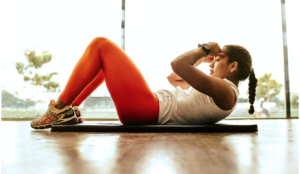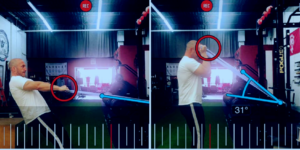
The Great 2020 Quarantine Workout Plan
By Eric Falstrault
We are going through trying times. We all lost our sense of time and urgency. Most of us have lost our routine. Routines are like our safety blanket since everything goes around it. We have a sense of accomplishment when our days are full and we get all our tasks done. Now they are trying to get into our brains that home is our safe place. Staying away from people is safer — it could save lives. I’m not buying it.
Since the dawn of time, we need connection, and we need to hang around people who lift us up! They are trying to convince us this is the new normal. They want to make us believe that social distancing is the new normal, which inevitably will change the way we take care of our health. I’m not buying it.
This is temporary, so hang in there! Gyms will never be obsolete — our health and psychological fitness depend on it.
In the meantime, you are not stuck at home gaining fat and feeling sorry for yourself. You don’t have to lose all your gains. The thing is that most of us don’t know yet is when we will have access to a gym again, but it doesn’t mean that you are stuck doing boring push-ups and air squats. There are countless exercises you can do home with little to no equipment.
I have clients who often find themselves stuck with less than desired conditions due to travel, lack of time, limited space, and so on. Instead of letting them think they are stuck in a rut, or can’t get decent progress because of conditions that are unfortunately out of their control, I challenge them. I turn things around and put the focus on elements that are not something we would concentrate on in our normal gym settings and regular calendar.
The challenge with home workouts is to obtain a decent amount of muscle fatigue. That’s when you will discover real muscle fatigue, because most people don’t train with their real 10-rep maximum weight. The challenge will be to go near or beyond muscle fatigue so that progress is still possible.
In almost any type of sports and everything, you have to do to improve performance, there is the Law of Diminishing Returns. This law states that as an investment in one goal increases, but other variables stay the same, the return on investment will eventually decline. In this case, bodyweight exercises are victims of this law because of the lack of greater challenges and resistance over extended periods.
One of the primary principles in strength training is “adaptation.” We must continually challenge our muscles for growth and strength. To counter adaptation, we must overload the muscles by increasing resistance. It will improve neural pathways and help muscles produce more force to handle heavier weights. It also stimulates bone growth and strengthens ligaments. Your muscles will also absorb and synthesize more protein while preventing catabolism (i.e., the breakdown of muscle).
You absolutely need adaptation! Exercise was, always and will always be, an adaptive process. If you don’t adapt, there is no progress. So basically, exercise is a stress, which the body responds to by increasing its physical abilities to adapt to this given stress. Not enough stress, no adaptation occurs, nor improvement. If stress is too much, injuries or overtraining may occur. Careful planning and applying these three principles will bring you results as long as you don’t fall into the plateau trap for too long.
- Increase volume.Do more sets; add one set every week. Since increasing the weight isn’t always an option, increasing volume will add more time of work per session.
- Decrease rest time.One way to decrease rest time would be to lower your rest intervals by 5-10 seconds every week. For example, for Week on that had sets of 60-second rest intervals can go down to 50, those with 45 go down to 35, and so on.
- Increase time under tension.As in use a longer tempo. Instead of the typical or textbook 3020 (3 seconds eccentric and 2 seconds concentric), use a longer tempo. Focus on achieving a full range of motion and the mind-muscle connection, feeling every fiber, controlling stability and posture throughout the movement.
Take the split squat as an example. The goal would be full range of knee flexion at bodyweight, keeping the upper body perpendicular to the floor for maximum hip extension. Look for tightness in specific areas such as hips, knees, and ankles, and use a slow tempo of 3230 (3 seconds eccentric, 2 seconds pose in the stretch position, and 3 seconds concentric) for 6-8 reps. This protocol will be more than enough to maximize muscle activation, improve posture, and create optimal muscle fatigue — still with a purpose of creating muscle hypertrophy with a time under tension of 48-64 seconds per set.
- Extended sets.You could add poses at different joint angles, work only in difficult angles, or both! Let’s say you do a set of pull-ups. You could do an extended set, such as this one for back:
A1. As many reps as possible (AMRAP) on pronated wide grip pullups, rest 15 seconds
A2. AMRAP on supinated close grip chin-ups, rest 15 seconds
A3. AMRAP on neutral medium grip pull-ups bottom half, no rest; as you reach your last rep, go as high as possible and hold until you can do no more.
Rest 3 minutes, repeat for 3 or 4 sets.
A great home workout, where the amount of available resistance is limited, would use one or more of these principles. Here is one for hypertrophy.
Day 1
| Seq | Exercise | Sets | Reps | Tempo | rest |
| A1 | Incline push-ups | 3 | 10 | 3030 | 0 |
| A2 | Flat push-ups | 3 | 10
1-3 or max |
3030
10-0-X-0 |
120 |
| B1 | Belt pulls | 3 | 10 | 3030 | 0 |
| B2 | Table supine rows | 3 | 10
1-3 or max |
3030
10-0-X-0 |
120 |
| C1 | Bodyweight squats | 3 | 10 | 3030 | 0 |
| C2 | Cyclist squats | 3 | 10 | 3030 | 0 |
| C3 | Split squats | 3 | 1-3 or max | 10-0-X-0 | 150 |
Notes
A1.Feet on the floor, hands goes on bench or between two chairs; or, for added instability, use a Swiss ball. Hands a bit wider than shoulder-width.
A2.Same width as A1. Do 10 reps with a tempo of 3030, followed by eccentric lowering for 1-3 reps, or max out.
B1.If you have a TRX or heavy bands, these would be useful. If not, pass a belt (as long as possible) between the door and the door frame at the top (add a towel in the loop of the belt to hold the belt at the top). Pull yourself up and down, on the other side of the door. The closer your feet are to the door, the harder it is.
B2.Under a table or a chair, pull up parallel to the floor (or as we call it, supine rows). Do 10 reps with a tempo of 3030, followed by eccentric lowering for 1-3 reps or max out. Make certain the table is well balanced and stable. B1 and B2 could easily be replaced by a pull-up bar or rings.
C1. The tempo should be as strict as possible for all exercises, but especially for these squats.
C2. Elevated your heels as high as possible. Imagine holding a bar behind your back, lowering yourself while keeping your back perpendicular to the floor throughout the whole ROM.
C3.1-3 reps of 10 seconds eccentrics.
Day 2
| Seq | Exercise | Sets | Reps | Tempo | rest |
| A1 | Doorknob French press |
3 |
10 | 3030 | 0 |
| A2 | Flat push-ups
Close grip |
3 | 10
1-3 or max |
3030
10-0-X-0 |
120 |
| B1 | Doorknob curls | 3 | 10 | 3030 | 0 |
| B2 | Counter isometric holds | 3 | 5
1-3 or max |
1-10-1-0 | 120 |
| C1 | Unilateral Romanian deadlift | 3 | 10 | 3030 | 0 |
| C2 | Hamstring supine iso contraction unilateral | 3 | 10 | 1-10-1-0 | 0 |
Notes
A1.Loop the belt around both doorknobs (each side of the same door) or around steel frame if available. This could easily be replaced by bands or free weights. The closer your feet are to the door, the harder it is. Pull yourself up and down as shown in the picture.
A2. Same as Day 1 using shoulder-width. Do 10 reps with a tempo of 3030, followed by an eccentric lowering for 1-3 reps, or max out.
B1. Same set-up as A1, but now facing the door. Pull yourself up, as in doing a curl by flexing the arms.
B2. With your arms flexed at 90 degrees if possible (more or less) and hands under a countertop, push against the countertop for an isometric hold of 10 seconds.
C1.The tempo is essential for this one. You can hold a bag in your arms.
C2.Bend your knee to 90 degrees. Lift the other leg, pushing your heel into the floor while trying to lift your butt only a few inches. Hold the position for 10 seconds and repeat 5 times.
All these variations could be substituted with bands, free weights, pull-up bars, and so on. Have a little imagination and enjoy the process!
This storm is almost over. One thing is for sure — storms can only make us better captains. This storm will pass, like all the others.


 Bicep curl and triceps French press, doorknob variations.
Bicep curl and triceps French press, doorknob variations.